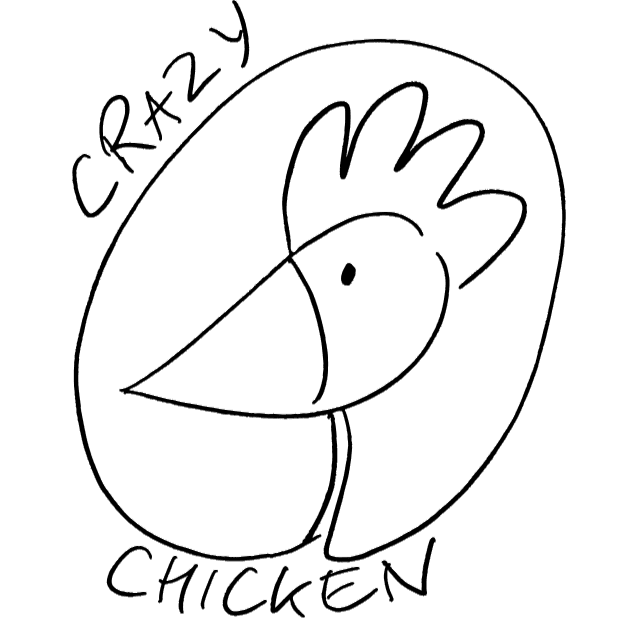This article is just a discussion on the tone control for an Electro-Harmonix Big Muff. Looking to build your own? Here’s the stripboard layout for an Electro-Harmonix Big Muff.
 The Big Muff by Electro-Harmonix is another one of those super famous guitar pedals. It has a classic fuzz sound to it with a schematic that’s relatively easy to understand. Sure, it’s quite a bit more complicated that a Fuzz Face, but there’s also a lot more that you can do with it, including tone control.
The Big Muff by Electro-Harmonix is another one of those super famous guitar pedals. It has a classic fuzz sound to it with a schematic that’s relatively easy to understand. Sure, it’s quite a bit more complicated that a Fuzz Face, but there’s also a lot more that you can do with it, including tone control.
And it’s the tone control that I find quite interesting. Rather than go through the entire schematic in a great detail, I want to just concentrate on a Big Muff Tone control, go through it, what it does, and why it’s cool.
Essentially, the Big Muff tone stack is a combination of a high and a low pass filter, creating a mid-scoop. From there, a potentiometer controls how much of the high or pass is coming through, giving either cut to the low or a cut to the high. Almost like two tone controls in one! It’s quite a cool little trick that really broadens the tone of a pedal.
So, let’s take a look.
What Is A Mid Scoop?
If you take a look at my article on how high and low pass filters work, you’ll note that a high pass filter allows high frequencies through while cutting off the low. Meanwhile, a low pass filter does the opposite: it lets through the low frequencies while cutting off the high frequencies. Stack these together in parallel, and you have a mid scoop.
It’s called this because on one side of the parallel circuit low frequencies are getting through, but no high frequencies. On the other side of the parallel circuit, the high frequencies are getting through, but no the low. When the signal meets up again, the common thing that’s been cut out is the mid range frequencies.
Here’s a mid scoop schematic similar to what’s seen in the Big Muff, including the the tone potentiometer on the output (more on this later).
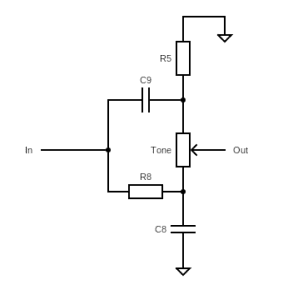
By varying up the values for C9/R5 and R8/C8, you can vary up the filters and therefore the scoop. Either way you get a low pass filter that looks a bit like this:
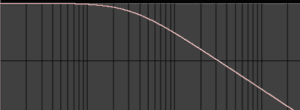
And a high pass filter that looks a bit like this:
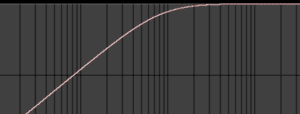
Notice the overlap in cut off frequencies. When the signal comes back together, the highs and the lows have been maintained, but a nice scoop has been taken out of the mid range.
Somewhat exaggerated for effect, you get something that looks like this.
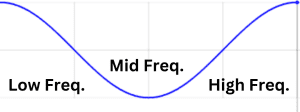
Some people like scooped mid frequencies, some hate them. I’m not going to go into it here, but a scooped mid sound does have its place, especially for heavier music.
What’s Happening In The Big Muff Tone Circuit?
The key to the Big Muff tone circuit is the potentiometer after the mid scoop filter. Here’s the schematic again for reference.

I purposefully haven’t put any values in here because they’ve changed over the years. Although the layout has remained the same across most iterations of the Big Muff, the actual values, and therefore where and how big the scoop is, has changed. How it behaves stays the same.
Remember that a potentiometer is just a variable resistor and, by varying the resistance, you can vary how much (or how little) signal gets through. That’s the basics of a volume potentiometer after all…
Because of this, if you lower the resistance at the high pass filter end (C9 and R5), you’re drastically increasing the resistance for the the low pass filter (R8 and C8). All of the high pass signal gets through and basically none of the low pass filter: you have what sounds like a high pass filter by itself. Going the other way, there’s a lot of resistance on the high pass filter and very little of the signal gets through, but all of the low pass filter gets through: you essentially have a low pass filter on its own.
In the middle, you have a typical scooped mid signal, but outside of that, you actually just have something pretty close to a high or a low pass filter. You can either get a sound with a lot of treble and not much bass, or a sound with a lot of bass without much treble. All from just one tone knob.
And that’s what’s interesting about the Big Muff’s tone control. You get both!
So with the tone pot on a Big Muff in the middle, you get a frequency range like this, which is a mid scoop:

Moved all the way towards the bass side of the pot, you have this, a low pass filter:

And then moved to the treble side of the pot, you get a high pass filter:

Things become very interesting when you’re not using the extremes though. For example, if you turn the tone pot about three quarters of the way towards treble, you have a typical high pass filter with a small mid scoop and a little bit of bass tone coming through:

Then obviously the opposite when you go the other way towards the bass.

So What Can You Do With All Of This?
What can’t you do with all of this?
As mentioned, the values of the capacitors and the resistors will change exactly where the scoop is occurring, but this can be a fun way to change up the tone of any otherwise basic pedal.
If you’re looking to start modifying standard pedal designs, look past a basic high pass or low pass filter for your tone control. Why not add the Big Muff styles tone control in there instead? Sure, it may not sound great with some circuits, but you won’t know until you find out…
Related posts:
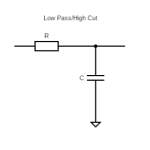 How High Pass And Low Pass Filters Work In Guitar Pedals
How High Pass And Low Pass Filters Work In Guitar Pedals
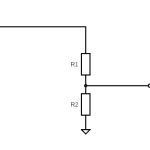 What Is A Voltage Divider?
What Is A Voltage Divider?
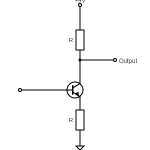 What Is Gain (And How It’s Different From Volume)
What Is Gain (And How It’s Different From Volume)
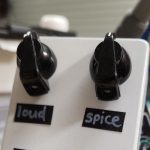 How Does A Drive, Gain, Or Distortion Knob Work?
How Does A Drive, Gain, Or Distortion Knob Work?
 Electro-Harmonix Big Muff On Stripboard
Electro-Harmonix Big Muff On Stripboard
 What Is Transistor hFE?
What Is Transistor hFE?
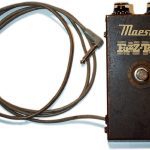 A Brief History Of Fuzz Pedals
A Brief History Of Fuzz Pedals
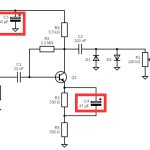 What Are Decoupling Capacitors?
What Are Decoupling Capacitors?
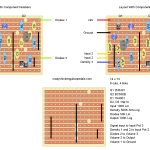 Catalinbread Karma Suture On Stripboard
Catalinbread Karma Suture On Stripboard
 Colorsound One Knob Fuzz On Stripboard
Colorsound One Knob Fuzz On Stripboard